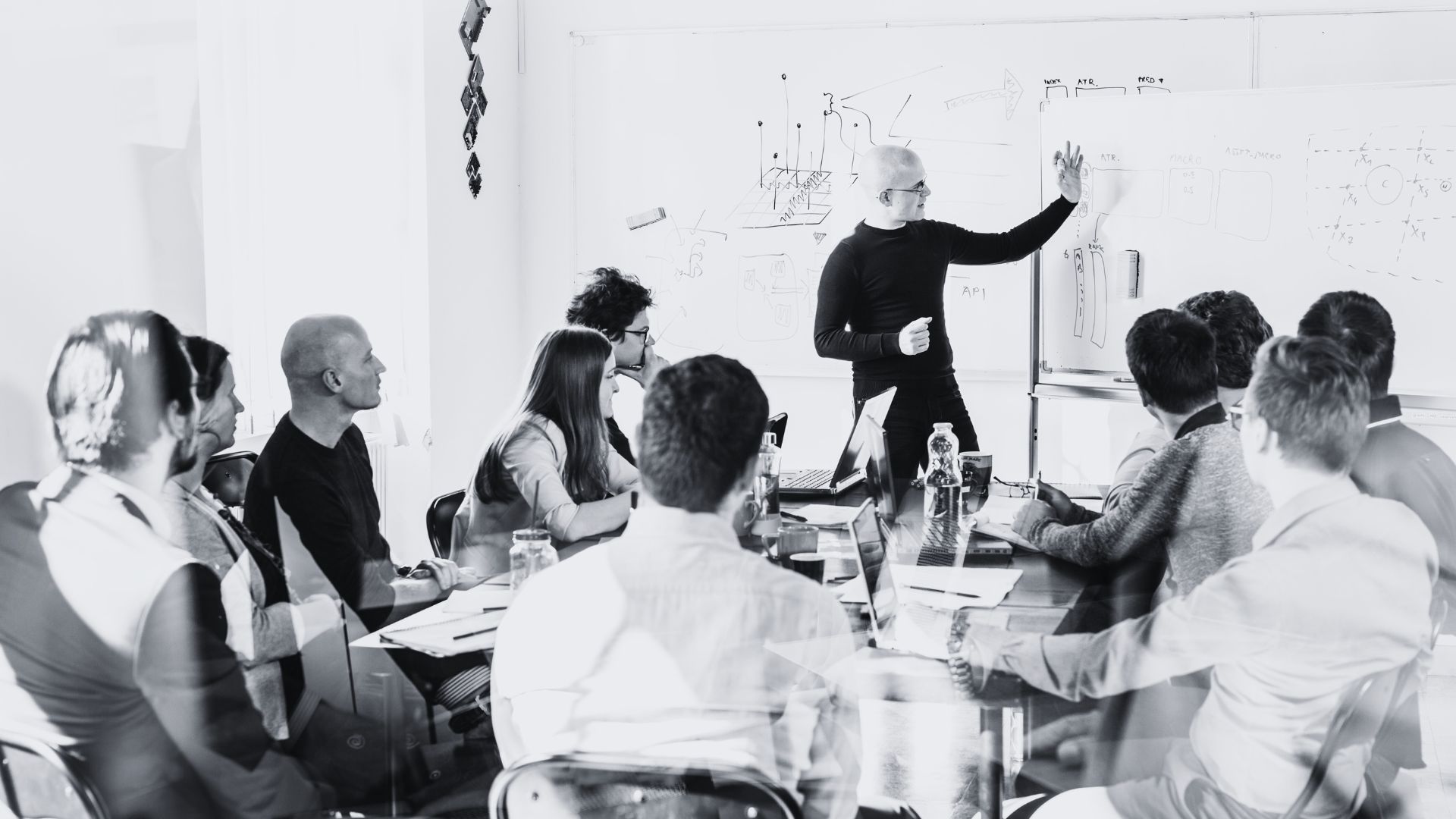What is an Agile Retrospective? A Breakdown
Agile retrospectives stand at the heart of continuous improvement in agile project management. They are not just meetings but powerful tools for team reflection and growth. Understanding what is an agile retrospective and how it functions is crucial for any agile team looking to enhance their processes and outcomes.
In this article, we investigate the intricacies of agile retrospectives. We explore their structure, participants, and their vital role in fostering a culture of open communication and collaborative problem-solving. Whether you’re new to agile methodologies or looking to refine your existing practices, this guide offers valuable insights into making the most of your agile retrospectives.

The Evolution of Agile Retrospectives
A. Historical Context and Origins
You might be surprised to learn that the agile retrospective wasn’t born overnight. It evolved from a rich history of iterative development methods dating back to the 1970s. Initially, these methods were responses to the limitations of traditional, linear project management approaches.
Agile retrospectives, as we know them today, began taking shape with the advent of the Agile Manifesto in 2001. This pivotal moment in software development emphasized the need for continuous improvement, laying the groundwork for retrospectives to become a cornerstone of agile methodologies.
B. How Retrospectives Have Shaped Agile Practices
Agile retrospectives have significantly shaped how teams approach project management and software development. In the early days, retrospectives were more about problem-solving specific issues. Now, they’ve transformed into comprehensive sessions where teams address challenges, celebrate successes, and plan for future improvements. This shift has fostered a culture of open communication and continuous feedback, integral to agile principles.
By regularly reflecting on performance, agile teams have become more adaptive, responsive, and efficient. The retrospective’s role in promoting team collaboration and enhancing the scrum methodology cannot be overstated.

Participants of an Agile Retrospective
A. Roles: Scrum Master, Product Owner, and Team Members
In an agile retrospective, each participant plays a pivotal role. As a Scrum Master, you’re the facilitator, guiding the team through the retrospective process. Your role is to ensure that the meeting stays focused and productive.
The Product Owner brings a unique perspective, focusing on the product’s success and aligning team efforts with customer needs. And the team members are the core of the retrospective. Their insights, experiences, and feedback are crucial. They provide a practical viewpoint of day-to-day operations, highlighting successes and identifying areas for improvement.
B. The Importance of Team Collaboration and Diversity
The strength of an agile retrospective lies in the diversity of its participants. Each member brings different skills, experiences, and perspectives to the table. This diversity fuels innovative solutions and a comprehensive understanding of challenges.
Collaboration is key. You’re not just sharing individual experiences but weaving them together to create a holistic view of the project’s progress. This collaborative environment fosters a sense of ownership and accountability among team members, which is essential for the success of agile methodologies.
Embrace the diversity of your team. It’s your most valuable asset in driving continuous improvement and achieving agile success.

Structure of an Agile Retrospective
A. The Agile Retrospective Phases
In an agile retrospective, structure is your ally. It begins with setting the stage. Here, you establish the meeting’s purpose and create an environment where everyone feels comfortable sharing. Next, you gather data. This is where you review what happened during the sprint, focusing on facts and observations.
Then, you generate insights. Discuss what this data means, identifying patterns and underlying issues. The crucial phase is deciding what to do. Here, you collectively agree on actionable steps to address the insights gathered. Finally, closing the retrospective is about summarizing the discussion, reaffirming commitments, and setting a positive tone for the next sprint.
B. Techniques and Tools for Effective Retrospectives
To make your retrospectives more effective, leverage various techniques and tools. Techniques like ‘Start, Stop, Continue’ or ‘Dot Voting’ can help structure discussions and prioritize actions.
Tools, whether digital or physical, facilitate collaboration and record-keeping. Digital tools are handy for remote teams, offering features like virtual whiteboards and real-time collaboration.
Remember, the choice of techniques and tools should align with your team’s needs and the specific challenges you face. The right combination can transform your retrospectives from mundane meetings into powerful team growth and learning sessions.

Preparing for a Retrospective
A. Setting Objectives and Agendas
Setting clear objectives and a well-defined agenda is crucial as you prepare for a retrospective. Start by identifying the specific goals you want to achieve in this session. Are you addressing a particular challenge or focusing on general improvement?
Once your objectives are clear, craft an agenda that aligns with these goals. This agenda should outline the key topics for discussion and allocate time for each retrospective segment. A well-planned agenda is a roadmap to a successful retrospective. It keeps the session focused and ensures that all critical issues are addressed.
B. Creating a Safe and Open Environment
Creating a safe and open environment is essential for a productive retrospective. You want every team member to feel comfortable sharing their thoughts and opinions. Start by establishing ground rules that promote respect and confidentiality.
Encourage open communication and ensure that every voice is heard. This can be achieved by creating an inclusive atmosphere where all contributions are valued.
The more comfortable your team feels in expressing their views, the more insightful and effective your retrospective will be. A safe environment is not just about comfort; it’s about fostering trust and openness, which are vital to unlocking the full potential of your agile team.

Executing the Retrospective
A. Facilitating Discussions and Activities
When executing the retrospective, your role as a facilitator is pivotal. Begin by guiding the team through the agenda, ensuring each topic receives adequate attention.
Encourage participation from all members, allowing everyone to voice their thoughts. Use facilitation techniques like open-ended questions to spark discussions and keep them on track.
Your goal is to lead the team to uncover insights and solutions collaboratively. Balance the conversation between reflecting on challenges and celebrating successes. This approach not only addresses issues but also boosts team morale.
B. Encouraging Honest Feedback and Constructive Criticism
A key aspect of executing a successful retrospective is fostering an environment where honest feedback and constructive criticism are welcomed. Encourage your team to share their genuine experiences and viewpoints, even critical ones. However, ensure this criticism is constructive and focused on processes, not individuals.
Frame feedback in a way that is helpful and aimed at improvement. This can be facilitated by asking the right questions and steering the conversation towards solutions. The objective is not to assign blame but to collaboratively find ways to enhance team performance and agile practices.

Post-Retrospective Actions
A. Documenting Outcomes and Action Items
After your retrospective, it’s crucial to document the outcomes and agreed-upon action items. This step ensures that the insights and decisions made during the meeting are not lost. As a team member, take responsibility for recording these details accurately.
The documentation should include specific actions, who is responsible for each, and a timeline for completion. This clarity transforms discussions into tangible results. Well-documented action items are the foundation for continuous improvement in your agile journey.
B. Ensuring Follow-Up and Implementation of Improvements
The final step in the retrospective process is ensuring that the action items are followed up and implemented. This responsibility lies with the entire team.
Schedule regular check-ins to review the progress of these actions. Are they being implemented as planned? Are there any obstacles?
These follow-up sessions are crucial for maintaining the momentum of improvement. They also reinforce the team’s commitment to the agile principles of adaptation and growth. The true value of a retrospective is realized only when its outcomes are effectively put into practice.
Conclusion
Understanding what an agile retrospective is and effectively implementing it is crucial to your team’s success in agile project management. These retrospectives are not just routine meetings but pivotal moments for reflection, learning, and growth. You ensure continuous improvement and adaptability in your agile journey by actively participating, documenting outcomes, and following through on action items.
The power of an agile retrospective lies in its ability to transform challenges into actionable insights. Embrace this tool with an open mind and a collaborative spirit. Your commitment to this process will not only enhance your team’s performance but also contribute significantly to the overall success of your agile projects.

Subscribe to the newsletter and join a dynamic community of project leaders. Unlock your full potential and master the art of executing projects with purpose, intention, and lasting impact.
Thank you for subscribing!
Have a great day!